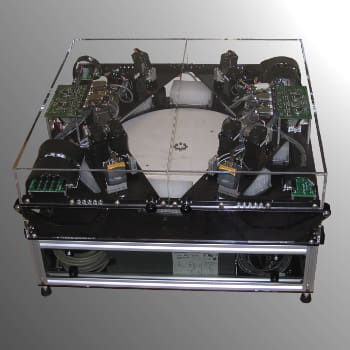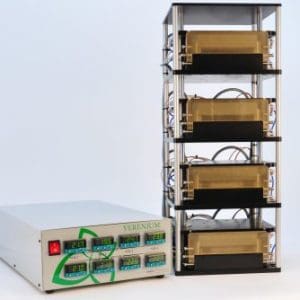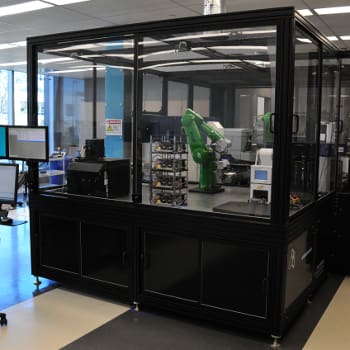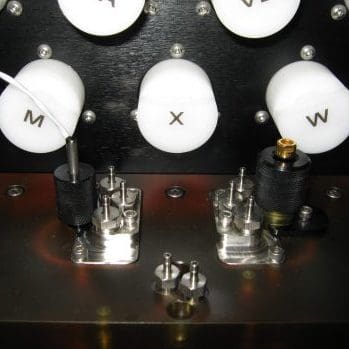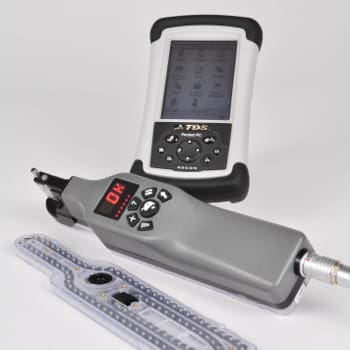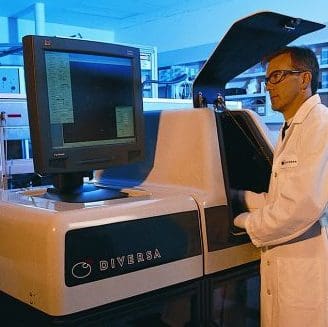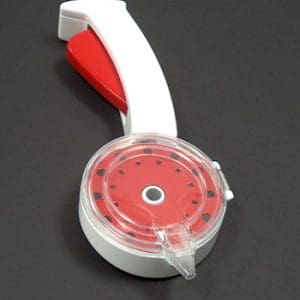The Client’s Need
NOVO’s client had won a federal research grant to investigate a novel method for separating chiral molecules (also called enantiomers). The basis of the separation method was that when enantiomers suspended in a fluid are subjected to high shear rates, the molecules migrate in different directions depending on their chirality. An efficient method for chiral separation has many applications in chemistry and drug development. The customer hired NOVO to design and implement a low-cost mechanism to generate the desired high shear rates required to test the chiral separator concept.
The Technical and Design Challenges
The basic design approach was to generate the shear across a small fluid-filled gap between two concentric cylinders, one stationary and the other rotating. Motor speed and torque restrictions limited the maximum rotation speed of the moving cylinder, which resulted in the need for a gap of roughly 20 microns between the two cylinders to achieve the desired shear rate. For practical reasons, the diameter of the cylinders needed to be close to 100mm, and fabricating the cylinders to the desired tolerances required NOVO to work with vendors who provided specialized production processes, such as grinding and diamond-turning. Generating a low-friction kinematic mount that would allow the cylinders to self-align under the fluid forces and balancing of the system to avoid vibration were other important mechanical considerations. In addition, the high shear rate generated several hundred watts of heat, which had to be dissipated efficiently while accounting for other thermal effects, such as differential thermal expansion.
The Engineering Behind Great Products
After analyzing the risks associated with the original specification, NOVO’s engineers recommended the fabrication of an intermediate design with a higher gap of 250μ. The client agreed that this recommendation balanced risk and functionality.
NOVO selected low-cost smart motors to spin the separator at 4,000 rpm and selected and arranged the bearings to accommodate this rotation speed. The rotating parts were dynamically balanced. Metal-polishing techniques were employed to achieve a near-mirror finish on surfaces in contact with the fluid. The small-diameter holes required for solvent injection and drainage were drilled with special tools in the NOVO machine shop.
This project, was a small, fast, collaborative engagement with our client. NOVO tested the equipment and all specifications were met. The project finished on time and within budget.


